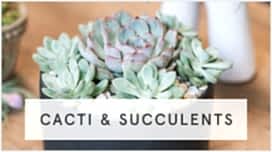A Guide to Caring for Your Outdoor Garden

A Guide to Caring for Your Outdoor Garden
A healthy garden is a happy garden. A happy garden equates to a happy homeowner, too. When the yard is bursting with color and vitality, it’s difficult to ignore the vibrant impact it has on your property’s curb appeal and character.
To ensure that it looks its best, it’s important to prioritize regular garden care and maintenance. Every little step counts, however small, and can make a big difference in the appearance and health of your outdoor space. By identifying ways to help your plants thrive and recognizing signs of potential problems, you can easily cultivate a garden that looks its best year-round.
Begin With the Basics
No one is born with a green thumb, but some people have a knack for producing lovely gardens that transform into the envy of the neighborhood. Learning how to nurture yours is the first step in the right direction, even if you don’t see yourself as a natural horticulturist. Like anything, it takes time, patience, and effort to enjoy the fruits of your labor.
Fortunately, the basics of gardening are quite straightforward and simple. Keep these easy pointers in mind as you begin your journey to a more vibrant garden
Wear the Right Clothes: What you wear matters, as it can mean the difference between a successful gardening session and one that’s cut short. Always use heavy-duty gloves to safeguard your hands from nicks and cuts, a hat to shield your eyes from potent ultraviolet rays, and sturdy boots to protect your feet.
Practice Safe Gardening: You’ll feel every bit the savvy gardener if you take some extra precautions to protect yourself while you’re outside. Always be mindful of how you lift objects and move them. Crouch at the knees instead of bending at the waist to prevent unnecessary strain on your back. Wear knee pads or use a garden kneeler and seat to relax while you work. When your body is at ease, you’ll enjoy the calming aspects of gardening so much more.
Focus on Timing: When you plant matters, as it makes the difference in how your garden looks at different times of the year. If you choose to plant your bulbs in the spring, they’ll bloom in all their glory during summer. If you do so in the fall, they’ll come to life in the spring. Both options are ideal, as it ensures that your landscape looks crisp and colorful throughout the year.
Planting Your Bulbs
Once you decide what to plant, make sure that the conditions for the job are ideal. Bulbs should always be planted in well-drained soil, either with full or partial sunlight to ensure that they receive what they need. Avoid planting your bulbs in overly saturated ground, as this could lead to root rot. Steer clear of completely shaded areas, too — light is essential!
Keep in mind that the size of the bulb dictates how large of a hole you should dig in the ground. A smaller size requires no more than six inches of depth, while you should dig up to a foot in the ground for a larger bulb. You can even experiment by placing several bulbs in a single, larger hole to produce a more ostentatious area that serves as the focal point of your garden bed
When you’re done planting, use a bulb fertilizer and enough water to soak to the depth of the hole. During these early stages, you must water at least an inch every week, unless it’s rained enough to fill the gap. Use a soaker hose, which will keep water away from the leaves and flowers. Finish with at least two inches of mulch to create a barrier that protects the soil from damaging elements.
Caring for Annuals and Perrenials
Don’t count on rainfall alone providing adequate moisture for your annuals and perennials. That’s especially true during summer when dehydration is a risk. The key is to water enough that the moisture reaches the root system, but doesn’t cause the soil to become soggy.
Both drip irrigation and soaker systems are ideal, but watering by hand is another option that allows you greater control. Moreover, you can monitor the growth of your plants and make any necessary changes if you discover that issues like disease or rot are present. As a general rule of thumb, avoid getting any water on the leaves and flowers, as this will make them far more vulnerable to contracting diseases.
Proper nourishment is also vital to the health and vitality of your garden. Adding mulch or other organic matter regularly goes a long way, and you may find that it’s more than enough. Sometimes, however, fertilizer is necessary, especially if the soil isn’t too fertile.
For annuals, use fertilizer in the spring to help your seedlings and transplanted blooms thrive quickly. During this time, they aren’t likely to receive their nutrients elsewhere, so this will help them thrive. Use a complete, balanced product, like a 10-10-10 fertilizer with equal amounts of nitrogen, phosphorus, and potassium to get started on the right note.
For perennials, add an inch of compost around your plants in the spring. Use a balanced fertilizer if it’s necessary to provide light fertilization. Monitor the plants’ growth throughout the season. If necessary, you can repeat the composting and fertilizing process in the middle of summer, especially if the plant has not grown adequately or its leaves are lighter in color. Then, later in the season, fertilize the plants again so that they look their best in the fall.
Proper mulching is among the most vital steps you can take to further the integrity of your garden. It’s not just crucial to the health of the plants, but also the appearance of the yard as a whole. It creates definition, draws the eye to certain areas, and allows colorful flowers to stand out even more.
From a nourishment standpoint, it performs a significant role in balancing moisture in the soil and regulating ground temperature. Otherwise, your flowers are left vulnerable to intense heat and cold, both of which can affect growth patterns and long-term success rates.
Ideally, use organic mulch to add more nutrients to the soil and to improve the ability to hold moisture. Always apply the mulch after you’ve planted, when the soil is still damp but also warm. Some common and effective organic mulch options include grass clippings, shredded leaves, crumbled bark, and pine needles.
Again, proper mulching is essential. Avoid creating mountains of mulch around the plant, as this can lead to root rot and prevent the roots from developing properly. For perennials, make sure you add mulch late in the fall, as the weather is cool enough to prevent any new growth from the beginning. Then, in the spring when the blooms start to thrive, remove the mulch so the plants can soak up that extreme dose of sunshine.
How to Maintain Their Beauty
Appearances matter in the garden. The best possible way to ensure that your flowers look their best is to remove the older ones as needed. This process, known as deadheading, is quick, simple, and effective in transforming the appearance of your yard.
Doing so is straightforward. Periodically examine your flowers for signs of wilting flowers and leaves. Remove them as you go along. That will help the plants grow vigorously, ensure they look their best, and encourage regular blooming.
If you have any plants that grow tall, like marigold or larkspur, you’ll need to support them with stakes, which are made from materials like bamboo and wood. They should be tall enough to keep the plants upright, but not so tall that they overwhelm the yard and stand out.
Do some research to find out how tall the plant will be when it reaches maturity. Then, choose a stake that’s approximately six inches shorter to ensure it doesn’t take away from the beauty of your plant.
It’s also imperative to check your plants periodically for signs of insect infestations. The idea is to tackle the problem before the plants start to fruit or you risk them failing prematurely. As you’re doing this, keep a close eye out for weed growth. It doesn’t take long for these pesky growths to overwhelm a garden, so you should be mindful of resolving the issue as soon as you discover it. If you pull them out, make sure you get the root as well, or you leave them at risk of multiplying.
Finally, think about ways that your garden can benefit the environment. When plants reach the natural end of their life cycle, you don’t necessarily need to pluck them and toss them away. Consider putting them in a pile for compost, which gives them a chance to nourish your garden and give it life in a different way in the springtime. Just be sure not to use anything that may have been exposed to insects or disease. Spending time on garden care will dramatically improve the health, integrity, and quality of your plants. By highlighting the importance of moisture, nutrition, and sunlight, you can be certain that your outdoor space will look its best year-round.












